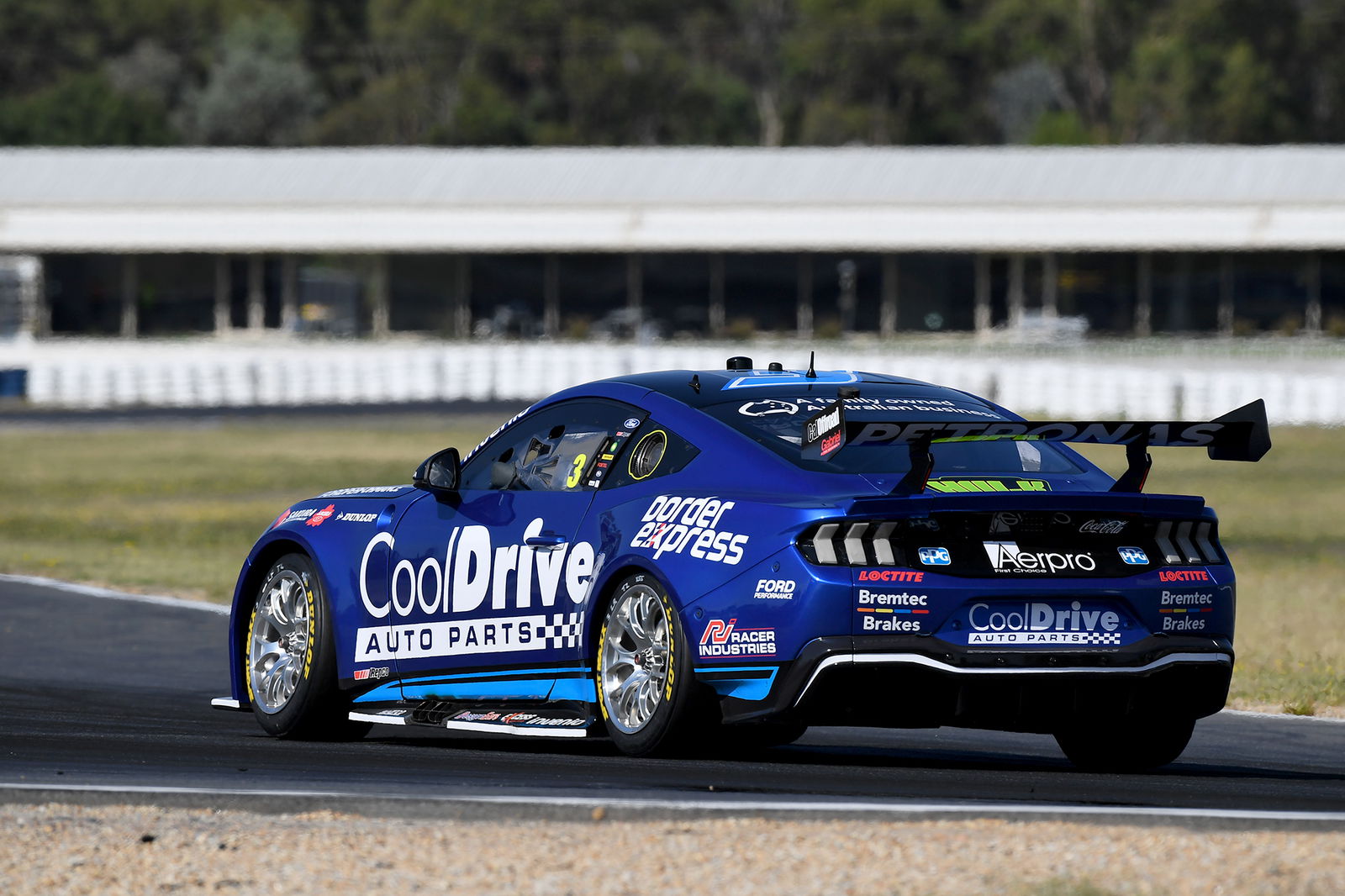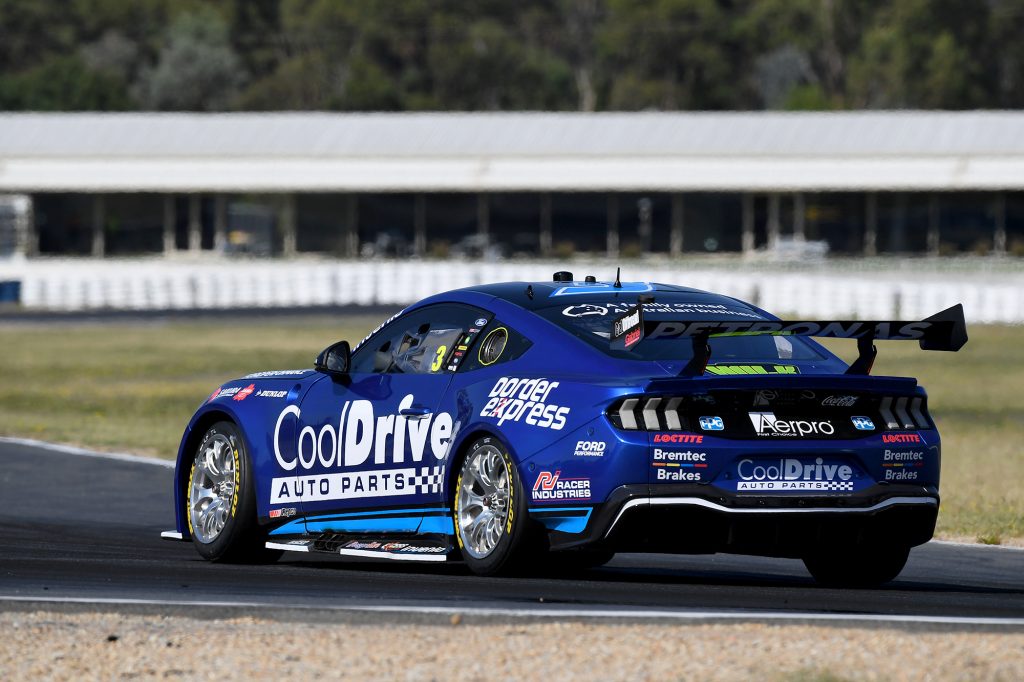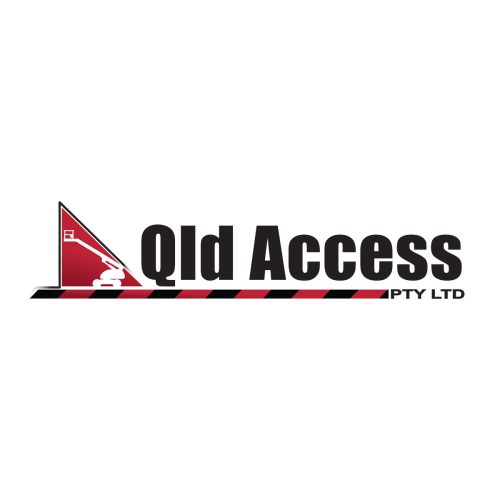

Dick Johnson Racing’s as yet unnamed engine division, which has assumed the Herrod Performance Engines operation, has spent the off-season working on improvements to its Coyote-based V8.
Two different specifications of motor were back-to-backed in a DJR Mustang at a recent parity test, before a new-spec unit was run again in the Ford homologation team’s #11 Mustang in Monday’s Queensland Raceway test and also today in the #3 Blanchard Racing Team entry at Winton.
While Ford’s 5.4-litre quad cam unit was found by Supercars’ existing tools to be in parity with the 5.7-litre pushrod LTR Chevrolet motor last year, transient performance – which cannot be measured on a static dynamometer – has long been a source of conjecture.
As such, the DJR engine operation, now spearheaded by Ryan Story following his return to full-time motorsport involvement, has been working to improve the Coyote-based powerplant’s moment of inertia.
Insiders from the Blue Oval camp have expressed confidence about the performance gains which have been achieved although, amid the rush to finalise a spec for the start of the 2024 season, there may have been too much gained.
That is said to be the take-out based on torque sensor data, wheel speed readings, and the real-world comparison between not just the DJR Mustangs at Queensland Raceway but also the Chevrolet Camaros which were on-track this week, including those from Triple Eight Race Engineering.
Otherwise, dynamometer testing by Supercars engine expert Craig Hasted is said to show parity based on the category’s established metrics of AEP (‘Accumulated Engine Power’) and EPWA (‘Engine Power Weighted Average’).
However, that was also the case last year, yet shift cut deltas were used as a parity ‘band-aid’, to use a term by then-Tickford Racing Team Principal Tim Edwards, now the Supercars General Manager of Motorsport.
While the recent arrival of torque sensors will provide a real-world indication of parity (or otherwise), transient dynamometer testing is now not set to take place until after the season starts, and hence shift cuts could still be used as interim parity measure.
More data will be captured today through the #3 BRT Mustang, in which Aaron Love is completing a rookie test day before both of the Box Hill-based squad’s cars run tomorrow.
Love’s team-mate James Courtney was sighted earlier today in his race suit, and is entitled to up to 10 laps in Car #3, per Rule D1.3.6 of the Supercars Operations Manual, although it is not known if the 2010 champion has steered the blue Mustang yet.
The rationale for selecting Car #3 is the very fact that BRT is using a rookie day on top of its first standard test day of the year, and hence the additional data collection.
Given both hardware and software tweaks have been under test, there is now a race against time to modify engines if indeed Supercars does approve a change to the physical spec, given the season starts in 16 days’ time at Mount Panorama.
It is thought that each Ford team might only have three updated engines between their two Mustangs, short of the standard allocation of four.
However, under a rule change which is understood to be unconnected to the DJR development work, teams may now share engines across entries rather than each entry being restricted to two particular units.
All southern-based teams are in action today at Winton, where the #3 BRT Mustang is producing a noticeably different engine note to those of Tickford Racing, Walkinshaw Andretti United, and Grove Racing (shakedown only).
On the Chevrolet side, it is Erebus Motorsport, Brad Jones Racing, and Team 18 cutting laps.
Engines are in focus after two rounds of off-season wind tunnel testing in order to ensure aerodynamic parity between the Camaro and Mustang.




















Discussion about this post